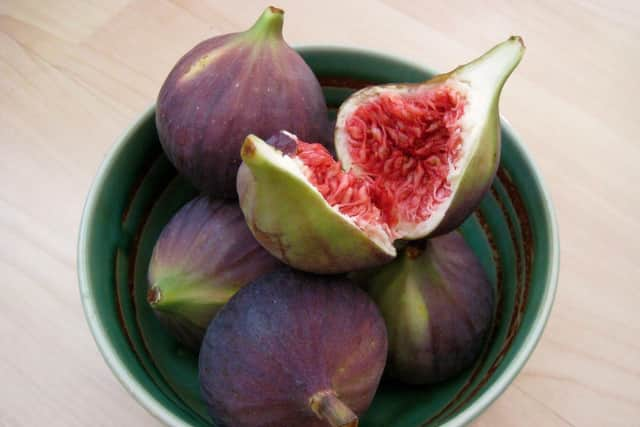Palm Sunday is a day steeped in food traditions from figs to peas
and live on Freeview channel 276
Figs have a rich association with the day. There are several theories behind this. Jesus is supposed to have cursed the fig tree on his way to Jerusalem. Another one suggests figs sustained him on his journey to the holy city. Another story tells of Zaccheus climbing a fig tree to catch a glimpse of Jesus among the throng.
In Wales it’s known as Flower Day, with reference to the time of year the fig tree comes into flower. In various parts of England it’s known simply as Fig Sunday. A fig pie or figgy pudding is made and is similar to Christmas pudding with dried fruit, spice, suet and steamed. If you can get fresh figs they’re delicious quartered and fried in a pan with a little honey or maple syrup. Serve with cream, ice-cream or some crumbled blue cheese. If you have the barbecue cranked up, cut them in half, brush with oil and cook on the grill. Serve with some salty Parma ham and a few dressed leaves to garnish. In the recipe here dried figs are whizzed into a cake with almonds. The figs, alongside, some sultanas are soaked in cider before being folded into a cake batter with almonds.
Advertisement
Advertisement
In the north of England and Scotland peas were eaten. A specific variety of pea known as the Carlin would have been served and in England Palm Sunday became known as Carlin Sunday and in Scotland Car Sunday. These small brown peas are also known as pigeon peas, black badgers or maple peas. The custom of eating them at this time of year is said to stem from pilgrims having a hard pea in their shoe as a penance during Lent. Eating the peas in a dish marked the end of this tortuous activity. They would have been boiled until tender and served as an accompanying vegetable or served cold doused with vinegar.


You can source Carlin peas from a company called Hodmedod’s in England and they are worth trying. It would be a shame for a vegetable like this to become extinct so eating them makes sense. A good substitute is the marrowfat pea. They would usually be used in a classic scotch broth or made into mushy peas to enjoy with fried fish. In the recipe here they’re cooked with bacon ribs in a potato topped hot pot - a one pot, self contained dish. After soaking in water overnight they can be cooked in stock with some fried bacon and onions and then finished off with a mustardy vinaigrette and lots of parsley. Serve this with roast chicken or some bacon or pork chops.
Eating dried peas and pulses makes sense especially now in the season known as the “hungry gap”. This transitionary period between winter roots and early summer produce can be supplemented with dried beans and peas. They’re a great soaker upper of flavours - soak overnight, cook in stock and whatever vegetables are available and finish with lots of herbs. Good bacon will add even more flavour and a little goes a long way.